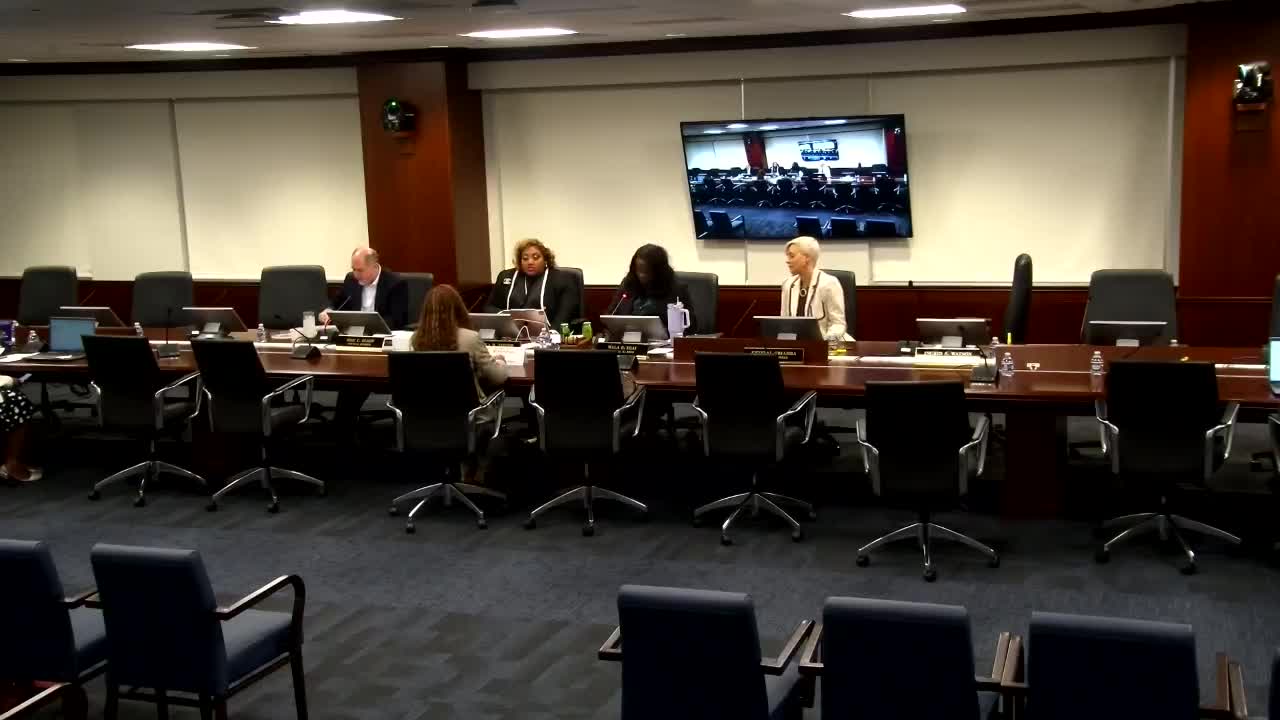Family Justice Center briefs committee on decade of service and warns of funding gaps as grants dwindle
October 16, 2025 | Prince George's County, Maryland
This article was created by AI summarizing key points discussed. AI makes mistakes, so for full details and context, please refer to the video of the full meeting. Please report any errors so we can fix them. Report an error »

The Family Justice Center gave a briefing to the Health, Human Services and Public Safety Committee describing nearly a decade of service to survivors of domestic violence and asking the county to evaluate sustainable funding options.
The presenter said the center opened in 2016 as a collaborative effort led by the courts and now houses six government partners and 16 community organizations co‑located to provide civil and criminal legal assistance, case management, forensic services and other supports to survivors. "To date, we have served over 10,000 survivors in Prince George's County and have made referrals to over 160,000 individuals," the presenter said.
The center said about 75 percent of its current operating budget comes from grants and that it recently lost roughly 30 percent of its grant funding due to changing grant priorities. The court currently pays rent and utilities for the center and funds one staff position (the presenter said that position is the center's director); the other staff positions are grant‑funded. The center's presenter urged the council to consider long‑term, sustainable county support rather than relying primarily on grants.
"We cannot live and die on grants," the presenter told the committee, noting the center's broad service array including legal services (the presenter said there are six law firms providing services), housing assistance, social services referrals and specialized programs for children, including a Camp Hope program that provides five‑day overnight mentoring for children affected by domestic violence.
Committee members expressed support and discussed options for including the center in an upcoming strategic plan work group on domestic violence and for considering funding in the county budget process. Vice Chair Fisher referenced an upcoming work group and encouraged coordination between the center, the council and the administration during the next budget cycle.
The briefing did not include a committee vote; members indicated interest in receiving the center's district‑level data and exploring potential funding avenues, both at the county and state levels.
The presenter said the center opened in 2016 as a collaborative effort led by the courts and now houses six government partners and 16 community organizations co‑located to provide civil and criminal legal assistance, case management, forensic services and other supports to survivors. "To date, we have served over 10,000 survivors in Prince George's County and have made referrals to over 160,000 individuals," the presenter said.
The center said about 75 percent of its current operating budget comes from grants and that it recently lost roughly 30 percent of its grant funding due to changing grant priorities. The court currently pays rent and utilities for the center and funds one staff position (the presenter said that position is the center's director); the other staff positions are grant‑funded. The center's presenter urged the council to consider long‑term, sustainable county support rather than relying primarily on grants.
"We cannot live and die on grants," the presenter told the committee, noting the center's broad service array including legal services (the presenter said there are six law firms providing services), housing assistance, social services referrals and specialized programs for children, including a Camp Hope program that provides five‑day overnight mentoring for children affected by domestic violence.
Committee members expressed support and discussed options for including the center in an upcoming strategic plan work group on domestic violence and for considering funding in the county budget process. Vice Chair Fisher referenced an upcoming work group and encouraged coordination between the center, the council and the administration during the next budget cycle.
The briefing did not include a committee vote; members indicated interest in receiving the center's district‑level data and exploring potential funding avenues, both at the county and state levels.
Don't Miss a Word: See the Full Meeting!
Go beyond summaries. Unlock every video, transcript, and key insight with a Founder Membership.
✓
Get instant access to full meeting videos
✓
Search and clip any phrase from complete transcripts
✓
Receive AI-powered summaries & custom alerts
✓
Enjoy lifetime, unrestricted access to government data
30-day money-back guarantee

